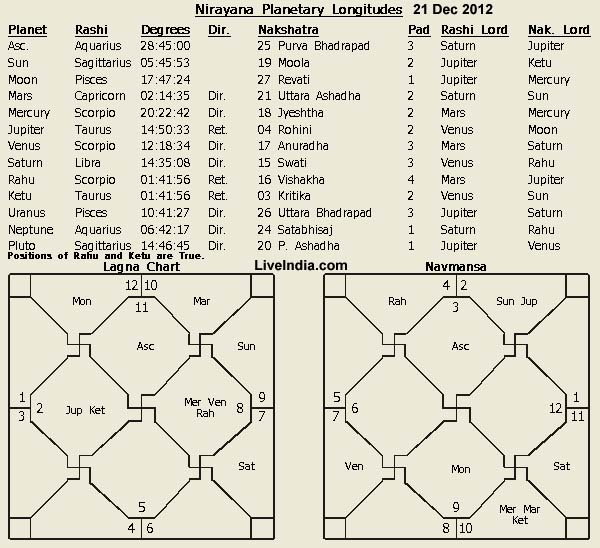|
|
The following news that you are going to read is just a Rumour The Maya are a native Mesoamerican people who developed one of the most sophisticated cultures in the Western Hemisphere before the arrival of the Spanish. Mayan religion was characterized by the worship of nature gods (especially the gods of sun, rain and corn), a priestly class, the importance of astronomy and astrology, rituals of human sacrifice, and the building of elaborate pyramidical temples. Some aspects of Mayan religion survive today among the Mayan Indians of Mexico and Central America, who practice a combination of traditional religion and Roman Catholicism Date founded:
Your scientific insight of the World of the Maya of Yucatán The art and architecture of the ancient Maya of Yucatán have fascinated visitors for more than 150 years. Incidents of Travel in Yucatán, the splendid two-volume publication written by John Lloyd Stephens and first published in New York in 1843, is still to be found on the shelves of bookstores the world over. A travel to the World of the Maya of Yucatán today is just as exciting as it was at the time of Stephens and Catherwood but can, of course, be much easier arranged and be more comfortably done. One hundred and fifty years after their report on the lost cities of Yucatan, the strikingly beautiful stone mosaic which adorns the south transverse vault of the so called "House of the Governor" at Uxmal can still be seen as it was captured by Catherwood in what is perhaps the finest drawing of Maya architecture ever done. Catherwood's lithograph of the round temple at Mayapán as it still appeared in 1842 has provided Mexican archaeologists with an authentic model after which to restore the building to its present state. This unique structure may be observed in one of our excursions and it shall be our pleasure to explain to you its function and significance in the concepts of the Maya of the 13th century. Modern science has unveiled many of the mysteries, which once shrouded the civilization of the ancient Maya. Epigraphers, linguists, historians, anthropologists, and archaeologists have worked jointly in order to free the ancient Maya cities and their noble rulers from some scholarly misconceptions of the past as well as from the fancy tales that have been invented to impress ignorant visitors and which are being told and sold until today. The idea that governs our efforts is to present our guests with authentic information based on the latest results from international scientific investigations in the Maya area.
We offer our guests an idea of the political and religious systems of the
ancient Maya of Yucatán as well as introduce them to the most prominent
protagonists who shaped history at their time and whose memory has been
preserved in the hieroglyphs which adorn their temples and palaces.
One such inscription can still be seen in the ancient residence of the Kokom, the "Supreme Judge" at Chichén Itzá. The hieroglyphic text is an exact description of visible and tangible reality, telling us that the palace was a low, one story building with a large number of rooms and that a slab of hard marble-stone was put in its place over the second doorway of the palace entrance in the year 870 AD. The lintel is still where the inscription says it was installed. We specialize in small groups of visitors who are more than just superficially interested in the World of the Maya of Yucatán and who want to know more about it than the regular tourist service is capable of providing. The preferred number of participants to an excursion is three to four, the maximum number is eight. We offer six different excursions. Each tour will commence in the early morning and "return to home base" during late afternoon.
The Mayan Long Count Just some basics to get us started. The Maya were adept skywatchers. Their Classic Period is thought to have lasted from 200 A.D. to 900 A.D., but recent archeological findings are pushing back the dawn of Mayan civilization in Mesoamerica. Large ruin sites indicating high culture with distinctly Mayan antecedents are being found in the jungles of Guatemala dating back to before the common era. And even before this, the Olmec civilization flourished and developed the sacred count of 260 days known as the tzolkin. The early Maya adopted two different time keeping systems, the "Short Count" and the Long Count. The Short Count derives from combining the tzolkin cycle with the solar year and the Venus cycle of 584 days. In this way, "short" periods of 13, 52 and 104 years are generated. Unfortunately, we won't have occasion to dwell on the properties of the so-called Short Count system here. The Long Count system is somewhat more abstract, yet is also related to certain astronomical cycles. It is based upon nested cycles of days multiplied at each level by that key Mayan number, twenty: Number of Days / Term
20 / Uinal 360 / Tun 7200 / Katun 144000 / Baktun Notice that the only exception to multiplying by twenty is at the tun level, where the uinal period is instead multiplied by 18 to make the 360-day tun. The Maya employed this counting system to track an unbroken sequence of days from the time it was inaugurated. The Mayan scholar Munro Edmonson believes that the Long Count was put in place around 355 B.C. This may be so, but the oldest Long Count date as yet found corresponds to 32 B.C. We find Long Count dates in the archeological record beginning with the baktun place value and separated by dots. For example: 6.19.19.0.0 equals 6 baktuns, 19 katuns, 19 tuns, 0 uinals and 0 days. Each baktun has 144000 days, each katun has 7200 days, and so on. If we add up all the values we find that 6.19.19.0.0 indicates a total of 1007640 days have elapsed since the Zero Date of 0.0.0.0.0. The much discussed 13-baktun cycle is completed 1872000 days (13 baktuns) after 0.0.0.0.0. This period of time is the so called Mayan "Great Cycle" of the Long Count and equals 5125.36 years. But how are we to relate this to a time frame we can understand? How does this Long Count relate to our Gregorian calendar? This problem of correlating Mayan time with "western" time has occupied Mayan scholars since the beginning. The standard question to answer became: what does 0.0.0.0.0 (the Long Count "beginning" point) equal in the Gregorian calendar? When this question is answered, archeological inscriptions can be put into their proper historical context and the end date of the 13-baktun cycle can be calculated. After years of considering data from varied fields such as astronomy, ethnography, archeology and iconography, J. Eric S. Thompson determined that 0.0.0.0.0 correponded to the Julian date 584283, which equals August 11th, 3114 B.C. in our Gregorian calendar. This means that the end date of 13.0.0.0.0, some 5125 years later, is December 21st, 2012 A.D.1 The relationship between the Long Count and Short Count has always been internally consistent (both were tracked alongside each other in an unbroken sequence since their conception). Now it is very interesting to note that an aspect of the "Short Count", namely, the sacred tzolkin count of 260 days, is still being followed in the highlands of Guatemala. As the Mayan scholar Munro Edmonson shows in The Book of the Year, this last surviving flicker of a calendar tradition some 3000 years old supports the Thompson correlation of 584283. Edmonson also states that the Long Count was begun by the Maya or pre-Maya around 355 B.C., but there is reason to believe that the Long Count system was being perfected for at least 200 years prior to that date. The point of interest for these early astronomers seems to have been the projected end date in 2012 A.D., rather than the beginning date in 3114 B.C. Having determined the end date in 2012 (for reasons we will come to shortly), and calling it 13.0.0.0.0, they thus proclaimed themselves to be living in the 6th baktun of the Great Cycle. The later Maya certainly attributed much mythological significance to the beginning date, relating it to the birth of their deities, but it now seems certain that the placement of the Long Count hinges upon its calculated end point. Why did early Mesoamerican skywatchers pick a date some 2300 years into the future and, in fact, how did they pinpoint an accurate winter solstice? With all these considerations one begins to suspect that, for some reason, the ancient New World astronomers were tracking precession. The Precession
I have concluded that even cultures with simple horizon astronomy and oral records passed down for a hundred years or so, would notice the slow shifting of the heavens. For example, imagine that you lived in an environment suited for accurately demarcated horizon astronomy. Even if this wasn't the case, you might erect monoliths to sight the horizon position of, most likely, the dawning winter solstice sun. This position in relation to background stars could be accurately preserved in oral verse or wisdom teachings, to be passed down for centuries. Since precession will change this position at the rate of 1 degree every 72 years, within the relatively short time of 100 years or so, a noticeable change will have occurred. The point of this is simple. To early cultures attuned to the subtle movements of the sky, precession would not have been hard to notice.2 The Maya are not generally credited with knowing about the precession of the equinoxes. But considering everything else we know about the amazing sophistication of Mesoamerican astronomy, can we realistically continue to deny them this? Many of the as yet undeciphered hieroglyphs may ultimately describe precessional myths. Furthermore, as I show in my book Tzolkin: Visionary Perspectives and Calendar Studies, the Long Count is perfectly suited for predicting future seasonal quarters, indefinitely, and precession is automatically accounted for. Some of the most incredible aspects of Mayan cosmo-conception are just now being discovered. As was the case with the state of Egyptology in the 1870's, we still have a lot to learn. In addition, Mayanists like Gordon Brotherston (The Book of the Fourth World) consider precessional knowledge among Mesoamerican cultures to be more than likely. |













